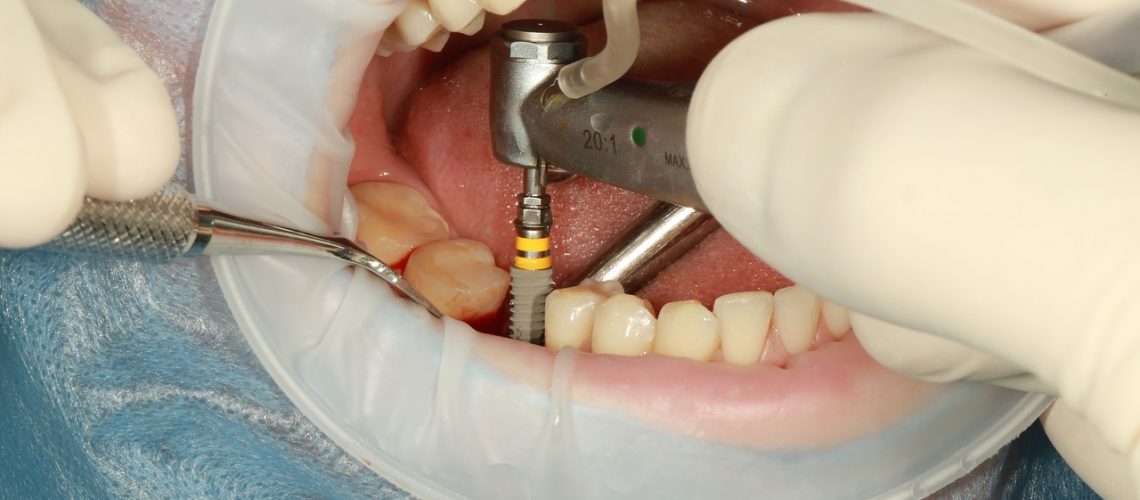The Main Principles Of Dental Sense
The 8-Second Trick For Dental Sense
Table of ContentsThe Only Guide for Dental SenseSome Ideas on Dental Sense You Need To KnowLittle Known Facts About Dental Sense.Dental Sense for Beginners
are medical tools operatively implanted right into the jaw to recover an individual's ability to eat or their appearance. They offer assistance for fabricated (phony) teeth, such as crowns, bridges, or dentures. When a tooth is shed as a result of injury or condition, an individual can experience difficulties such as fast bone loss, defective speech, or adjustments to eating patterns that lead to pain.Dental implant systems are composed of a dental implant body and oral implant abutment and might also consist of an abutment addiction screw. Dental implant vs bridge. The dental implant body is operatively put in the jawbone in area of the tooth's origin. The oral implant abutment is normally affixed to the implant body by the abutment addiction screw and extends with gum tissues right into the mouth to sustain the affixed artificial teeth
(https://dental-sense.webflow.io/)Framework of The Oral Implant System selecting oral implants, speak with your dental supplier regarding the prospective advantages and dangers, and whether you are a candidate for the procedure. Things to consider: Your general health is an essential element in identifying whether you are a great prospect for dental implants, how long it will take to heal, and the length of time the dental implant may remain in location.
Cigarette smoking might influence the healing process and reduce the long-lasting success of the implant. The recovery process for the dental implant body may take several months or longer, throughout which time you typically have a temporary abutment instead of the tooth. the dental implant treatment: Thoroughly follow the oral hygiene guidelines offered to you by your dental company.
Some Known Incorrect Statements About Dental Sense
Implant failure can lead to the requirement for another surgery to deal with or change the dental implant system. Restores the ability to chew Brings back aesthetic look Assists keep the jawbone from diminishing because of bone loss Preserves the wellness of the bordering bone and gums Aids maintain adjacent (neighboring) teeth secure Improves lifestyle Damages to bordering all-natural teeth during dental implant positioning Injury to the surrounding cells during surgical procedure, such as sinus perforation Injury during surgical procedure (as an example, crack of surrounding jawbone) Poor feature, such as seeming like the teeth do not attack with each other normally A sensation that the tooth is loose or twisting in location arising from a joint screw loosening Implant body failure (looseness of the implant body) because of systemic infection, which may be most likely in individuals with unrestrained diabetes due to local infection in bone and periodontals sustaining the implant body as a result of postponed healing, which may be more probable in clients that smoke Trouble cleansing the gums around the dental implant, resulting in bad dental health Neglected gum condition Post-surgical pins and needles due to nerve impingement or damages Constantly alert healthcare providers and imaging specialists that you have oral implants before any type of magnetic vibration imaging (MRI) or x-ray procedures.
FDA is not knowledgeable about any kind of damaging events reported for MRI or x-ray procedures with oral implants. Dental implants systems are typically made of products that comply with worldwide consensus standards of the International Organization for Standardization (ISO) or ASTM International. These standards have details of what makes a secure material.

An oral implant is a structure that changes a missing out on tooth. With screw-like tools, the specialist inserts a dental implant right into the jawbone, and it works as an anchor for a synthetic tooth, called a crown. A tool called an abutment connects the man-made tooth to the oral implant. The crown is customized to fit the individual's mouth and match the color of their teeth.
How Dental Sense can Save You Time, Stress, and Money.
Some people are not eligible for oral implant surgical procedure. It is for oral surgeons to operate on individuals with: severe illnessuncontrollable metabolic diseasebone or soft cells illness or infectionIf these issues are settled, a person can have the surgery. In, oral doctors refrain from operating individuals with: If people with any one of the above undergo oral implant surgical procedure, there is a higher danger of the dental implant falling short.

Oral dental implant surgical treatment is a customized procedure. It's not the exact same for every person. But the following provides a basic summary of what you can expect your dental professional, oral specialist, periodontist or prosthodontist to do: Put the implant operatively. Provide you time to recover. Connect the article and last crown, bridge or denture.
Next, your surgeon will carefully put the dental implant right into your jaw. Your doctor will certainly reposition your periodontals and close the cut with stitches. If your dental implant is near the front of your mouth, your dental practitioner will make a momentary tooth for you to use up until you heal. This way, you will not have a space in your smile while you recuperate.
4 Easy Facts About Dental Sense Described
During the recovery stage, your jawbone needs to fuse to the dental implant. This procedure can take anywhere from three to 9 months.
As soon as your dental implant heals, your dentist can affix the abutment (small port article) and your last remediation (crown, bridge or denture). This generally takes concerning one hour to complete and may need a second minor surgery. You should not feel any discomfort throughout your oral implant procedure due to the fact that your copyright will use drug to numb your gums.